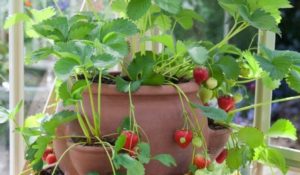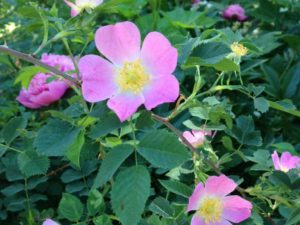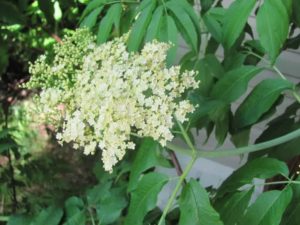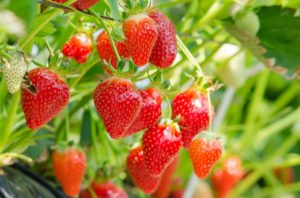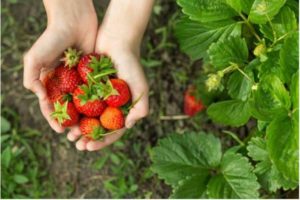The Alpine Strawberry is often misunderstood as it is unclear if it’s wild or not.
Its scientific name Fragaria Vesca originates from the French term – Fraise Des Bois – meaning ‘Wild Strawberry’. Despite the confusion, they are mostly referred to as wild strawberries.
The Alpine strawberry is not like a traditional garden strawberry that you purchase at the grocery store. They are much sweeter and far smaller.
They are native to Europe and Asia but have been refined to different varieties over the past 300 years! There is a strain of the Alpine strawberry that is yellow and cream in color.
These ruby red strawberries have small white flowers growing on their branches, are very pretty to look at, and are a beautiful addition to your garden.
Alpine strawberries are easily maintained and a great choice of fruit for harvesting.
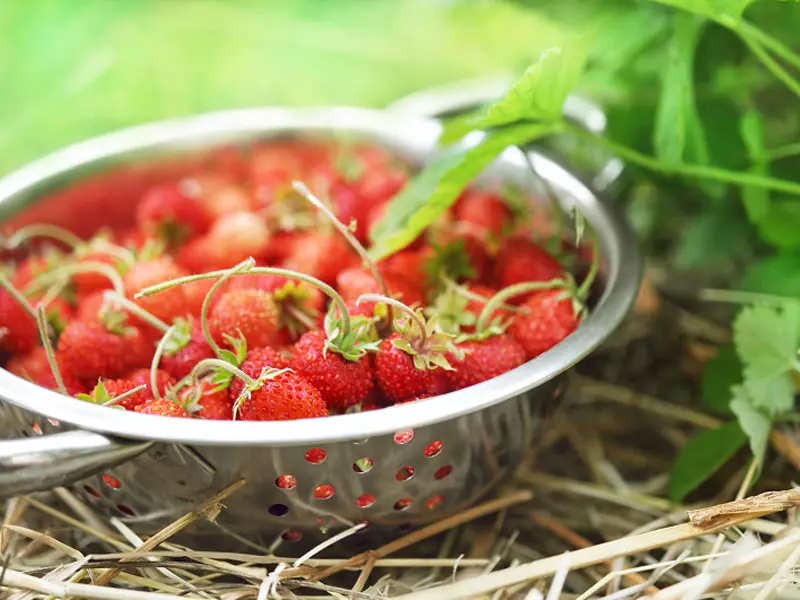
| Scientific Name | Fragaria Vesca |
| Common Names | Wild strawberry, Woodland strawberry |
| Hardiness | 3 through to 10 |
| Indoor or Outdoor Plant? | Outdoor |
| Sun Exposure | Partial sun |
| Water | 1 to 2 inches of water weekly |
| Size | 40cm by 40cm |
| Soil Type | Slightly acid soil, well-aerated |
| Soil pH | 6.0 to 6.5 |
| Flower | White and yellow center |
| Growing Difficulty Level | Easy |
Alpine Strawberries Appearance and Characteristics
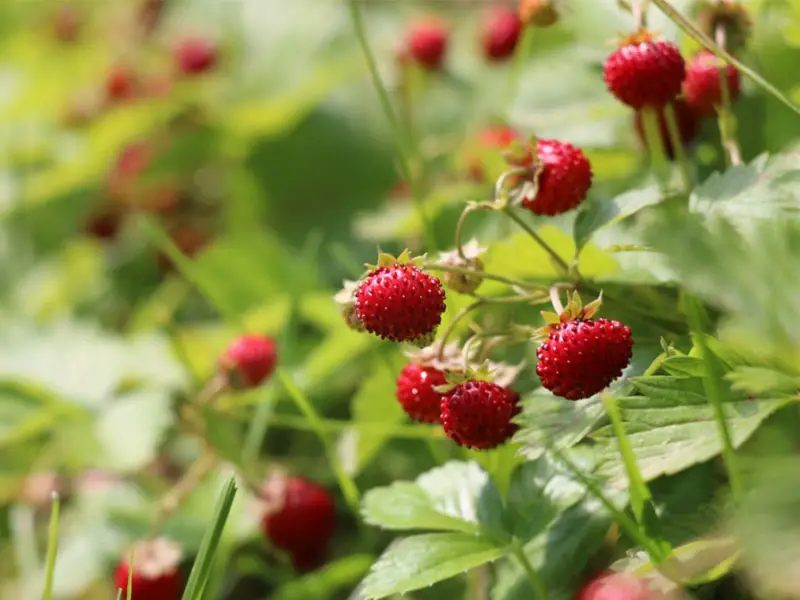
The Wild strawberries are long and thin and super small. At first, they are a greenish color, and as they ripen, they will become a bright red color.
All Alpine strawberries are covered in visible seeds that are also edible.
They are known to be very sweet and delicate. They always grow in clumps 40cm by 40cm with a beautiful white flower with five petals that have a bright yellow center.
In comparison to the traditional garden strawberry, they are much smaller and much richer in flavor.
Growing Alpine Strawberries
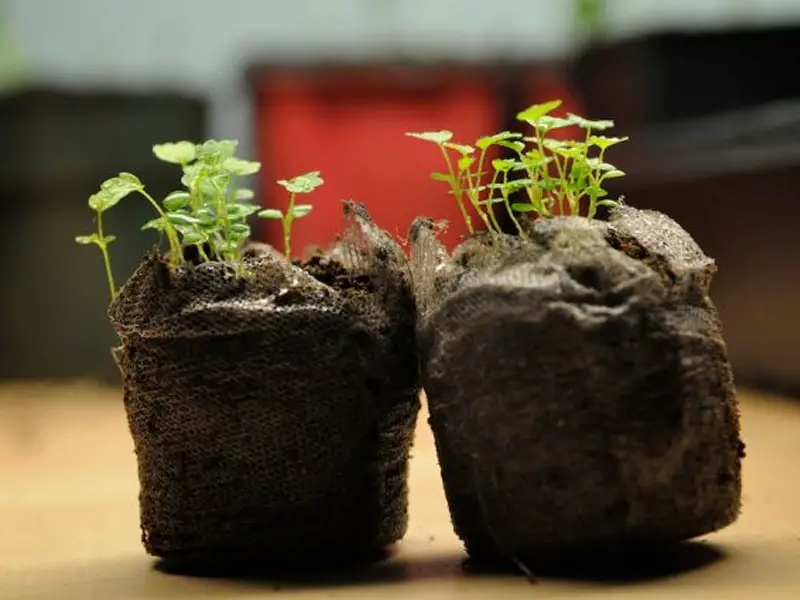
Alpine strawberries are generally used as edging plants around your garden beds. With lots of foliage and keeping a neat edge can help the growth of your strawberries.
When they have become mature and fully ripe, the Alpine strawberries have a distinct aroma around the plant.
Like most fruit, spring is the best time of the year to begin planting your wild strawberries. This will mean they are well and truly ready in the summertime.
When your Alpine strawberries have fully matured, they will be a bright red color. It is important to harvest them before they are overripe.
They will become soft, soggy, and a darker shade of red when overripe.
These strawberries can be grown in your garden or on your window sill.
Water
Keeping a steady water supply is the key to their growth. It is important not to puddle the plant but also not to let the soil dry out.
When you are starting your Alpine strawberry project, they will need 1 inch of water per week.
As they begin to sprout, up to 2 inches of water per week will be best for your crop. Usually, these strawberries can survive through warmer weather conditions, provided they can be in partial shade.
Top Tip: Using a hose to water these plants is the easiest option as a watering can is hard to fit under the plant to get to the root.
Light
You will be pleased to know unlike the rest of the strawberry family; the wild strawberries do not require as much sun exposure. 4-5 hours of full sun a day is ample time as they tend to struggle in extreme heat conditions.
Partial shade is a good idea for these plants, so their leaves do not burn in direct sun for too many hours. (This will depend on where you live and the intensity of the sun.)
Soil
It is important to keep the soil damp while your Alpine strawberry seeds settle in.
Although watering weekly is the key to maintaining your crop, they can survive in most soil conditions but will thrive in most inorganic, well-aerated soil. You may decide to use fertilizer to boost their growth.
A liquid fertilizer weekly is all you would need.
Using mulch in your soil is important if you live in a colder climate. Mulch can help them survive in the cold.
Temperature and Humidity
To ensure your strawberries thrive and grow to their full potential, make sure they grow in an area where the humidity level is 65-70%.
The perfect zones for this to be easily achieved are USDA zones 5 through to 9. Unlike other strawberries, the Alpine strawberry does considerably well in cooler conditions.
Potting and Re-Potting
Alpine strawberries are able to be planted in pots, if not straight into the ground.
If you want to have them potted indoors, you will need to grow strawberries in a container or tray, and they will need a spot in the house where they can get plenty of sunlight.
They should be planted roughly 3mm deep into the soil and 12 inches apart as they should not be overcrowded. This can impact their growth.
Propagating and Pruning
Luckily, because the wild strawberries grow in clumps, this makes for easy propagation.
The best way to do so is to start dividing the clumps into halves, making sure you have a good amount of leaves and roots on both sides.
You can then transplant them and continue like normal. Make sure they are still 12 inches apart and in well-aerated soil.
Advantages of Growing Alpine Strawberries
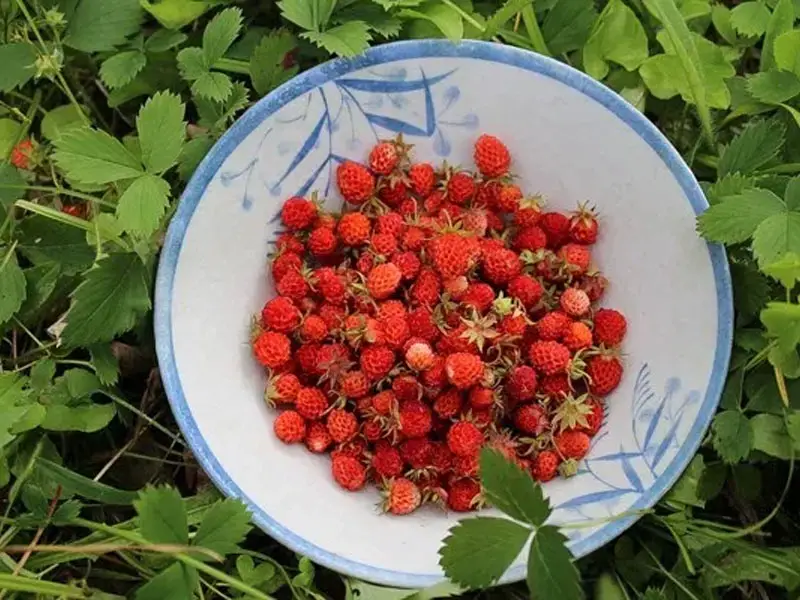
The advantages of growing Alpine strawberries are undeniable! Who wouldn’t want such a deliciously sweet fruit easily accessible in the comfort of your home?
You also do not necessarily need a lot of space in your garden to grow these. That part is completely up to you and how much you want to plant.
Not to mention they will add such beautiful color to your garden with their vibrant appearance and their gorgeous white flower to fill out the garden bed.
Lots of people grow these yummy strawberries to make things like jam, strawberry syrup, and even strawberry ice cream.
These could be a convenient gift for your neighbors or family at Christmas time and other holidays.
As we all know, strawberries are made for eating. This delicious fruit has many health benefits, such as lowering blood pressure, improving digestive health, and reducing inflammation.
And that is just to name a few!
The best time to harvest your strawberries is in the morning when the weather is cooler, and they can quickly be refrigerated so that you can keep them cool.
This helps them to stay juicy.
Fun Fact: The name strawberry has the word ‘straw’ in it for a reason. Laying straws around your crop can help avoid weeds.
Harvesting and Storing Alpine Strawberries
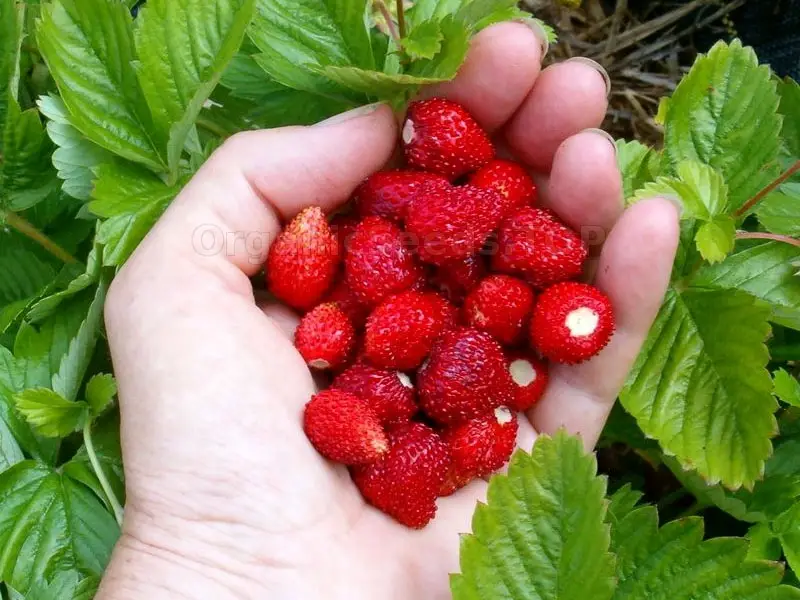
Alpine strawberries are quite easy to harvest as you can generally tell when they are ripe enough by look, touch, and smell.
These specific strawberries have a strong aroma around them once they are ripe enough to pick.
Visually, you want to make sure they are an opaque ruby red color. That part is the easiest! Once they are overripe, they will turn a deeper shade of red.
If you are judging their ripeness based on their touch, you need to make sure they are slightly firm. If they feel soft and soggy, they are overripe.
Once your harvesting is done, you can store your tasty strawberries.
Eating your strawberries within the first 2-3 days is best, but if you would like to extend their shelf life, you can easily do so.
Keeping a flat layer in an air-tight container in the fridge should last you roughly a week. After this, you may find they begin to mold.
If so, remove affected strawberries and move the healthy ones to a new air-tight container.
Alpine Strawberry Pests, Diseases, and Problems
Fruit usually have a long list of common pests and problems that affect them. Unfortunately, this includes the yummy Alpine strawberry.
Let us start with slugs.
Slugs
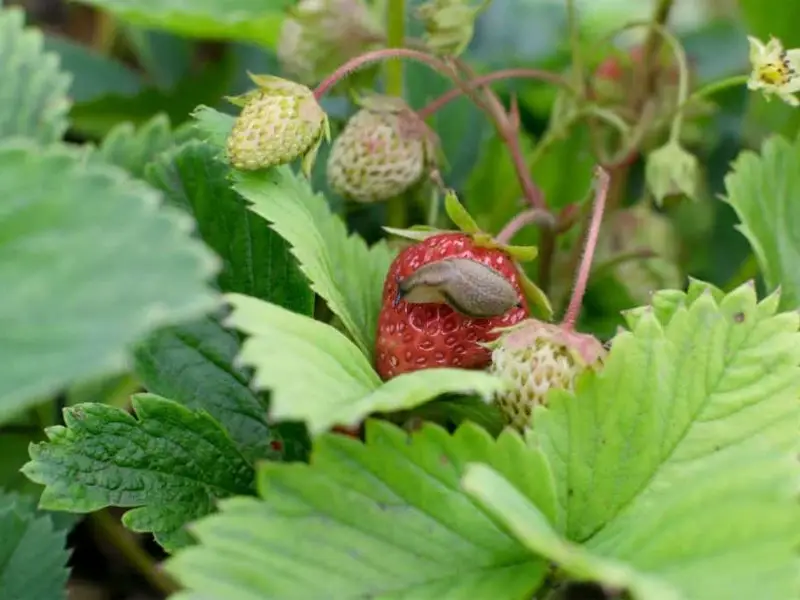
Slugs like to eat juicy strawberries and usually do so when they are ripe. They create holes in the strawberries as they eat their way through the berry.
They also like to eat the leaves. It is important to know, once a slug has eaten your strawberries, they must be disposed of.
Slugs like extremely wet soil, so are mindful that your soil has dried out between watering sessions.
They are also attracted to anything citrus. You can try placing orange or lemon rinds at the base of your strawberries. Then you can remove the slugs every morning.
Strawberry Bud Weevils
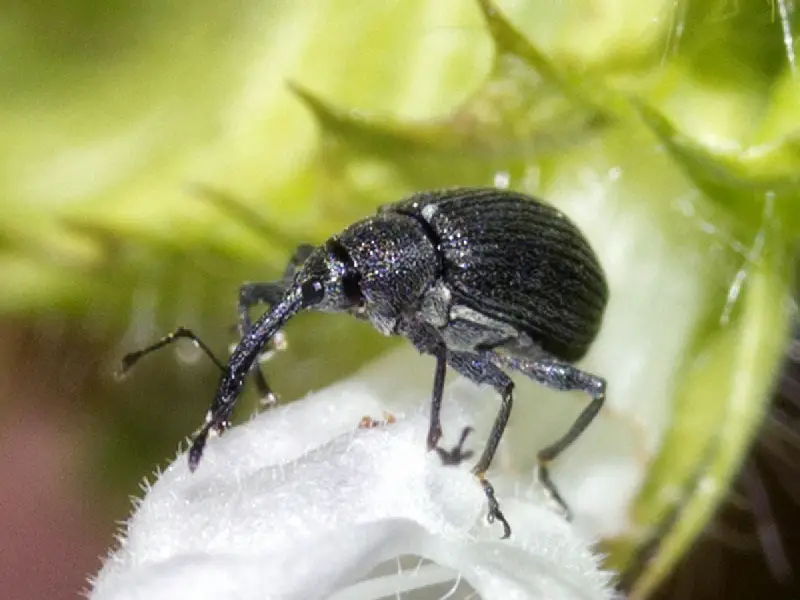
Strawberry bud weevils are also known as strawberry clippers. These cheeky pests actually love the gorgeous white flower that blooms with the Alpine strawberry.
They are attracted to the nectar in the center of the flower.
The center of the plant is where the female bud weevils will go to lay their eggs. This prevents the bud from opening, and the chance of that blossom becoming a strawberry is destroyed.
Aphids

Aphids are the most common pests in everyone’s garden. Luckily they are quite easy to get rid of. Here are a few of the many options to keep them out of your garden:
- Simply spray your plant/leaves with water; they will simply fall off.
- You can wipe a light layer of water and a few drops of dish soap mixture onto your plant/leaves. You can simply repeat this twice a week.
- Neem oil is another great aphid solution. (Make sure you follow the instructions on the packaging)
There are a few other pests that, unfortunately, love fruit. What’s not to love, right? But luckily, there are plenty of options out there that will help to prevent anything from destroying your beautiful strawberries.
Floating cover rows are a good idea for those who can not tend to their plants frequently.
This option can give you peace of mind knowing they are protected from insects laying their eggs and ruining your strawberries.
TIP: Did you know you can recycle coffee beans? You can simply sprinkle them at the root of your strawberry plants before watering to help keep away bugs.
Where to Buy Alpine Strawberry Seeds

These particular ones have 100 seeds per packet and come with clear germination and growing instructions.
FAQs
Do Alpine strawberries keep coming back every year?
Yes! Alpine Strawberries are perennial plants, which simply means they can grow for more than two years.
The beginning of growing your strawberries is detrimental to having them regrow year after year, so make sure you follow the right steps accordingly, and you’ll have Alpine strawberries year after year.
Can Alpine strawberries still grow in the shade?
As mentioned earlier, these strawberries can still thrive in partial shade.
Some sunlight will be important to maintain their growth, but wild strawberries can generally cope in the shade.
Be sure to keep in mind the climate you live in and if the humidity is too high or not high enough when considering how much shade your strawberries will have.
Can you eat Alpine strawberries?
Absolutely, you can! They are safely edible straight from the garden, but it is always good to wash your fruit.
Strawberries are great ingredients for so many things.
You can add them to your breakfast cereal or to your yogurt, they can be blended up into a delicious smoothie, or you can make jam or strawberry syrup.
The options for this zesty fruit are endless!
How tall do Alpine strawberry plants grow?
This beautiful and yummy plant will grow to be between 8 and 10 inches tall. The strawberry itself can be as small as a fingernail.
Do Alpine strawberries need lots of water?
Strawberry roots are only small, yet they do like a big drink of water. 1-2 inches per week is ideal.
This will change when and if you have more rainfall during their growing season.
Always water at the base of the soil to prevent over-soaking and mold growth. You also do not want your soil to be constantly wet.
Ideally, you want your soil drained well between each time you water. Think about watering deeply and not soaking the base of the plant.
The top 1-2 inches of the soil should be completely dry before you water again.
How long does it take for a strawberry plant to produce fruit?
It does not take very long before you start to see your strawberries grow.
Initially, you will see your tiny strawberries a green color before they begin to mature and ripen to a bright ruby red color.
This whole process can take anywhere between 3 or 4 months.
There are many factors to consider, such as the climate you live in, how often you water and feed your plant, and whether they are planted in your garden or indoors.
Tip: Remember if there are any setbacks like damage to your plants from pests, the fruit can take longer to develop.
How long do Alpine strawberries last?
Alpine strawberries bloom Spring through summer. They then tend to become stagnant. They will come back the following spring, ready to start all over again.
Are Alpine strawberries sweeter than regular store-bought strawberries?
Yes! They are much sweeter than regular strawberries. With a strong bomb of flavor, they are also more fragrant.


